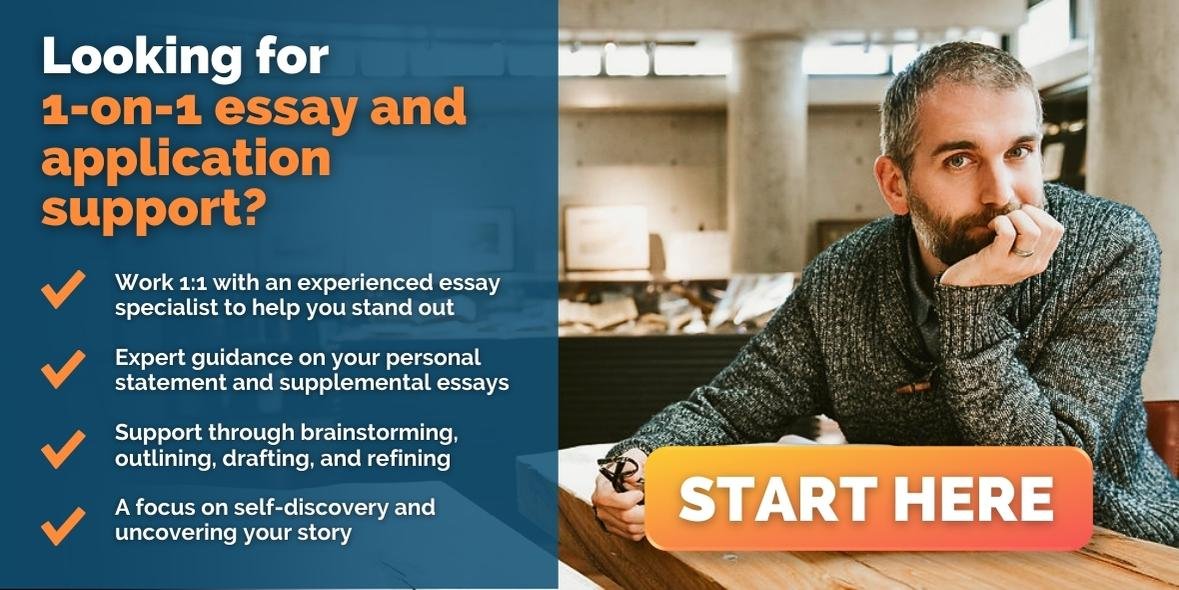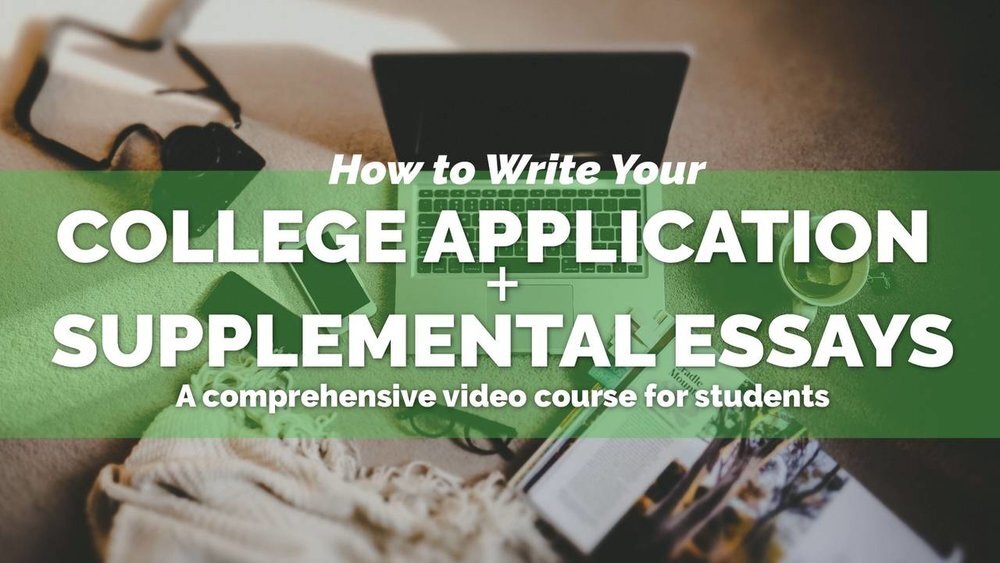(click to skip ahead)
The University of Michigan essays are kind of like the Pyramid of Giza if you turned it upside down and cut it in half.
Maybe we should elaborate.
The tip of a pyramid is pretty small, so you can’t fit a ton of stuff into that space. But as you go down (or up, if it’s upside down), you’ve got a lot more space to move around in. In much the same way, each University of Michigan essay prompts gets progressively broader in scope and larger in terms of word count.
Think of writing the University of Michigan essays as constructing a literary upside-down Pyramid of Giza. Every part is different, but each one connects to the others. And these, in conjunction with your personal statement, build a strong foundation for your reader.
But before you dive right into the prompts, get an extensive, by-the-numbers look at UMich’s offerings in its Common Data Set, and for deeper insights into how the university wants to grow and evolve, read its strategic plan.
What are the University of Michigan supplemental essay prompts?
Prompt #1
At the University of Michigan, we are focused on developing leaders and citizens who will challenge the present and enrich the future. In your essay, share with us how you are prepared to contribute to these goals. This could include the people, places, experiences, or aspirations that have shaped your journey and future plans (100 word minimum; 300 word maximum).
Prompt #2
Describe the unique qualities that attract you to the specific undergraduate college or school (including preferred admission and dual degree programs) to which you are applying at the University of Michigan. How would that curriculum support your interests (100 word minimum; 550 word maximum)?
How to Write Each Supplemental Essay Prompt for University of Michigan
How to Write the University of Michigan Supplemental Essay #1
At the University of Michigan, we are focused on developing leaders and citizens who will challenge the present and enrich the future. In your essay, share with us how you are prepared to contribute to these goals. This could include the people, places, experiences, or aspirations that have shaped your journey and future plans (100 word minimum; 300 word maximum).
There’s a solid amount packed into this prompt, and it’s asking you to cover a lot in just 300 words! This means you’ll have to be strategic AND make sure you’re hitting each and every point they’re asking you to. We’re here to help you do both.
Let’s highlight a few key elements of the prompt:
Michigan is focused on developing leaders and citizens who challenge the present and enrich the future.
What people, places, experiences, or aspirations have shaped your journey and future plans?
Some questions to guide how you can address this:
What have you done that has had an impact on your community (ranging from local to global)?
In what ways have you engaged in service or civic engagement?
What issues do you care about? Why? Have you engaged on the in some way before? How?
One option for this prompt is to treat this as essentially a “Community Essay” focused on how your engagement with that community led to positive change.
You can find our comprehensive guide on how to write the Community Essay here. Or, if you’re short on time, here’s the abbreviated version:
Step 1: Create a “communities” chart by listing all the communities you’re a part of. Keep in mind that communities can be defined by ...
1. Place: Groups of people who live/work/play near one another
2. Action: Groups of people who create change in the world by building, doing, or solving something together (Examples: Black Lives Matter, Girls Who Code, March for Our Lives)
3. Interest: Groups of people coming together based on a shared interest, experience, or expertise
4. Circumstance: Groups of people brought together either by chance or external events/situations.
Step 2: Use the BEABIES Exercise to generate your essay content. Once you’ve chosen a community, map out your content using the BEABIES Exercise. That exercise asks:
What did you actually do? (Tip: Use active verbs like “organized” and “managed” to clarify your responsibilities.)
What kinds of problems did you solve (personally, locally, or globally)?
What specific impact did you have?
What did you learn (skills, qualities, values)?
How did you apply the lessons you learned?
Step 3: Pick a structure. The Narrative Structure works well for students who have faced a challenge in or with this community. Otherwise, the Montage Structure works well.
Consider answering these three questions in your essay if you choose the Narrative Structure:
What challenge/s did you face?
What did you do about it?
What did you learn?
How do those things shape how you will contribute to the college? (Ideally with some Why Us detail)
Here’s an example for a similar prompt that illustrates how you can approach this essay (and others like it).
Example:
I felt a blend of connection and distinction at a Heritage Day event in Bahrain. Amidst a sea of flowing thobes and artistic hijabs, my Pakistani shalwar kameez, rich in embroidery, boldly told a tale of my roots. As the event unfolded, a curious voice asked, "Why is someone from Pakistan at our school?" Underlying that innocent curiosity was a shade of bias, reminding me of the delicate balance between being part of a group and standing apart.
Instead of diminishing my spirit, this nudged a fire within me. A fire that later blazed as I hoisted our flag, representing Bahrain in tennis and paddle tournaments. Those moments of uncertainty did not anchor me down; instead, they acted as the wind beneath my wings. My roles at Numu and IKMUN made me wonder—if I could lead there, why not lead in building bridges of understanding, too? So, I wore the hat of an inclusivity advocate. Through endeavors like "Go Green Environmental," I aimed to do more than just address water sanitation; I wanted to shift our collective lens. Activities like the Ramadan Food Drive and house renovations with Team Nasser made me witness the transformative power of community efforts.
Fordham University's ethos of justice and global sensibility? It is like hearing a familiar song that resonates deeply. The Dorothy Day Center for Service and Justice is not just a program; to me, it is a beacon. I envision a cultural symphony at Fordham, where our varied stories don't just echo but inspire. Drawing from my life's tapestry, I aspire to knit a community at Fordham where every voice is heard and celebrated. Let's make our stories not just tales to tell but beacons of inspiration for all.
Tips and analysis
Share (and briefly set context for) the experience. The first paragraph of this essay is dedicated to giving the reader all the context they need to know: the event (Heritage Day event in Bahrain), the student’s identity (Pakistani), the incident (“Why is someone from Pakistan at our school?”), and the thought or insight that allowed the student to take action (last sentence). While it may be easy in early drafts to over-explain, refining this part of the essay will give you the much-needed context for the rest of the essay where you’ll expand on your personal growth. Doing so briefly ensures that you can still devote most of your word count to your actions, impact, and insights.
Tie in relevant activities. This student mentions their roles at Numu, IKMUN, as well as “Go Green Environmental” and the Ramadan Food Drive. Weaving in these activities allows the student to create a narrative around their leadership experience in being an advocate for inclusivity, while also allowing them to expand on their activities list and give extra context that might have not fit there. In relation to the prompt, this advocacy is evidence for how their experience (first paragraph) inspired them to take action in some of their activities.
Potentially show how you can contribute. In the last paragraph, the student mentions how they’ll be able to use what they learned to contribute to Fordham’s campus, specifically the Dorothy Day Center. This isn’t a requirement for this prompt, but adding how you can contribute to a specific community could be a nice addition, especially if you haven’t had a chance to mention this specific aspect elsewhere. It’s also worth noting that this contribution piece may be more fitting for the second prompt below. Keep scrolling!
Here’s an example essay written for a very similar prompt for Princeton.
Example:
The rusty spigot spewed a stream of Malibu High’s signature yellow water into my bottle. I raised it to see the visible particles floating around. “I’ll just wait another 5 innings for a drink,” I thought.
Malibu High’s water was universally shunned. The only alternative was bottled water, which wasn’t an option for those who couldn’t afford it, and which led to tens-of-thousands of plastic bottles in landfills annually.
Our environmental club set out with one goal: to provide everyone on campus with clean, filtered water.
With a hint of ignorance, we marched into the school board meeting and made our case for filtration stations. Unfortunately, the board was not as enthusiastic as us. Despite passionate speeches from myself and my environmentalist colleagues, they didn’t see the importance of our mission.
So we went rogue. Nearly every student and staff member joined our movement with a pen stroke, and our community united under a common vision for Malibu High’s future. Everyone wanted the water (it’s useful for survival), but the district still refused funding. In response, I set up a GoFundMe, and we rallied community support. The GoFundMe raised over $2,500. The district was out of excuses.
We got our water!
In only one semester with the stations, we have saved 30,000 plastic bottles. The stations have become the center of the Malibu campus and community: during passing period, students and staff get the rare opportunity to affiliate outside the classroom, all while enjoying a refreshing, non-yellow beverage.
Tips and Analysis:
Share the issue you care about + hook your reader. By opening with an evocative description, the author quickly shows what the problem is. The three short opening paragraphs (under 100 words total) effectively set the scene, moving from personal (“I’ll just wait”), to the wider affected group (“the people who couldn’t afford it”) to the specific club that will take action. By opening your essay with great details and clear statements, you ensure the reader understands the challenge and your role quickly, while also more effectively pulling them into your story.
Be specific about the actions you took and honest about the outcome. As the reader explains the ways the club tackled the problem, or challenged the present in the words of this prompt, they’re not afraid to admit what didn’t work out. This shows a bit of vulnerability and draws the reader into the story. The hint of frustration about the board’s response adds an emotional layer, and shows how the student is willing to keep pushing despite structural obstacles. Instead of just recounting events, the author includes insight into their experience, showing the kind of citizen they are. This sets up the second half of the essay (“So we went rogue”), where the author’s actions demonstrate their initiative and collaboration. Showing what you do individually while acting as part of a wider group is an effective way of including some of these admission nutrients.
Show your commitment to community. This prompt is asking you to show the ways you’re prepared to make your community a better place. By explaining how you “challenge the present and enrich the future”, you are sharing examples of the way you show up for those around you and your willingness to take action about issues that are important to you. In this example, both the one-sentence paragraph, “We got our water!” and the “saved 30,000 plastic bottles” that follows it offer concrete evidence for the positive difference the project has made for his community. By reflecting on the impact of the project’s success (clean drinking water and greater interaction outside the classroom), the author also hints at the long-term. One way the essay could be adapted further for this prompt is to include specific references to the ways you may continue to take positive action as a proactive leader and citizen, both at the University of Michigan and after you graduate.
Wrap to a close. The bookend at the end of the essay (“refreshing, non-yellow beverage”) does a nice job of making the essay feel as though we’ve come full circle. If you want to explore bookending and other ways to end essays, check out this guide.
How to Write the University of Michigan Supplemental Essay #2
Describe the unique qualities that attract you to the specific undergraduate College or School (including preferred admission and dual degree programs) to which you are applying at the University of Michigan. How would that curriculum support your interests? (550 words)
For this one, rather than general tips, check out our complete guide on the “Why us?” essay. Want the TL;DR version? Here it is:
Don’t talk about things the University of Michigan already knows about and hears from tons of other applicants. These are things like weather, location, ranking, or reputation. Also try to avoid taking language directly from the website or brochures. Articulate things in your own words.
Talk about yourself too! Don’t just talk about why you like the University of Michigan. Also explain why you are a good fit for the school. Remember it’s a two-way street.
Do lots of research. Find specific resources, programs, or classes that appeal to you. This includes reading student reviews and doing tours (online, in-person, or both). You might even want to talk to a local representative in your area.
Connect back to your core values. For each part of UMich you like and want to explore, explain how that relates to one of your guiding values.
How you get started:
Spend 1 hr+ researching 10+ reasons why the University of Michigan might be a great fit for you (ideally 3-5 of the reasons will be unique to UMich and connect back to you).
Use this chart to map out your research.
Create an outline. Here’s an example of how you could structure yours:
Thought-provoking or interesting hook
Intro/thesis (say what you want to study and why)
Really specific academic offering at UMich that is in your intended major/concentration (this should connect to you in a really specific way)
A second really specific academic offering that’s also in your intended major/concentration (and that also connects back to you)
Something academic that’s not in your intended major/concentration (this keeps the focus on academics, but also brings in some variety)
Best/most important extracurricular offering (that connects to you in a really specific way)
Miscellaneous extracurriculars paragraph (these interests can also be sprinkled throughout to bolster or counterbalance your academic interest paragraphs)
Closing (this can be short)
Write a first draft.
Here’s a great sample essay for this prompt:
University of Michigan Supplemental Essay Example: Prompt #3
J.R.R. Tolkien introduced us to Middle Earth. George R.R. Martin invited us to King’s Landing. J.K. Rowling enrolled us in Hogwarts. In order to craft fantasy worlds that resonate with the widest audiences, the best writers combine their formal education with personal experience and distinct interests. Creatives must draw inspiration by integrating the depths of their psyche with their environment and, by studying creative writing and Asian studies, I believe the University of Michigan will provide me with opportunities to develop a strong minority voice in the predominantly Caucasian world of young adult fiction.
Through the Residential Colleges, I hope to be a part of a living-learning community that emphasizes critical thinking and creative expression while immersing myself in the development process. The ability to work one-on-one with an RC Professor and receive personalized instruction is invaluable, as it will give me the unique opportunity to address my weaknesses and improve my strengths. And a fiction writer cannot mold young minds to connect deeply and read critically complex works of art without having done so herself, so I am looking forward to First-Year Seminars such as “Topics in the Science of Creativity” and “Saving the World with a Story: Writers’ Voices of Conscience in Fiction,” as these will help me to analyze my writing on both a microscopic and macroscopic level.
The Center of Japanese Studies and the Department of Asian Languages and Cultures will enable me to deepen my understanding of Japanese culture in the classroom and apply my knowledge by studying abroad in Japan. The Residential College intensive language program will help me develop Japanese proficiency, allowing me to take full advantage of overseas study in Kyoto. Courses like Early East Asian Transformations, First-Year Japanese through Anime and Manga, and Spirits of Contemporary Japan will teach me to analyze spirituality, existentialism, and society in the context of classical and contemporary Japan. This can ultimately serve as a thematic basis for my writing. I can see myself attending live action and anime screenings on campus with club Animania and participating in cultural initiatives by the Japan Students Association.
Although writing and Asian Studies are my passions, I look forward to attending a large school with diverse opportunities and want to remain open to post-graduate careers in either business or law. As my sister and I have started a nonprofit, I may want to explore organizational studies. I also want to contribute to the UM community by becoming a Sweetland writing consultant and a creative writing intern at Ypsilanti District Libraries with 826Michigan.
Over the course of my interactions with Brittany Simmons and Logan Corey and after much research, I have come to see that what UM has to offer aligns with so many of my interests and core values. (No other school I know of offered courses in 2015 exploring my literary heroes Miyazaki and Murakami.) In short, Michigan has become a top choice for me and, if I am able to afford it financially, I would love to attend. (505 words)
— — —
Tips + Analysis
Spend some time setting the scene. Right off the bat, the author shows us how we are all implicated in the fantasy stories we know and love. He then talks about how his academic interests would help him understand both the real world and creatively envision alternate universes. That’s just so cool. He’s already done so much in the first paragraph. We’ve got a sense of his intellectual interests. And, we’ve got a good sense of his values (creativity and cultural sensitivity/awareness). It’s important that he included these core values upfront and then elaborates on them later in the essay. We know his direct answer to the question, but have to keep reading to get a better sense of why.
Make your structure clear and logical. After the first paragraph, we know the author is predominantly interested in creative writing and asian studies. In the next two paragraphs, he breaks down each interest and goes into great, specific detail about how he could explore those interests further at the University of Michigan. The arc of this essay makes sense and doesn’t leave the reader confused about what they’re reading or why they’re reading it.
Demonstrate specific interests, but don’t shut out other possibilities. While it’s clear the author has a passion for a couple of specific academic disciplines, he also mentions that he might want to explore community engagement opportunities or alternate post-graduate career options. He ties those other interests to previous experiences he’s had and would like to build on. This is great because a) it shows he’s multi-dimensional, b) has a diverse set of skills, and c) is open to new experiences. If you’re someone who’s not totally sure what you want to major in, this is a great example to follow. Just choose one or two fields of study to answer the question, then later you can add on other interests you might want to explore down the line.
Make good use of the connections you already have with the university. This applicant has already done research with some professors at UMich and knows some of the classes it taught years before he was applying. In the essay, he makes sure the admissions officers know that. Don’t be afraid to flaunt connections you have because it shows your commitment to UMich and demonstrates that you already have a foundation to build off if you were to be accepted.
Here’s another strong essay:
Example:
A PhD student at the Hawaii Institute of Marine Biology once told me something that changed my life. “I can spend my entire career studying the effects that greenhouse gases have on our coral reefs and larger ecosystems, but if my work stays in the lab, it’s worthless.” Mariela’s right. If scientists aren’t advocating for policy and politicians aren’t embracing scientific evidence, then our world will move further into complacency and ignorance. I want to combat the issue of climate change from both a scientific and legislative front, and I believe a major in Political Science, Economics, and Philosophy and a minor in Environment at the University of Michigan can help me achieve this goal.
Last year, as a volunteer with Dr. Kim Schrier’s congressional campaign, I gained hands-on experience in local government. At the University of Michigan, I would jump at the opportunity to participate in the Public Service Internship program in order to gain a better understanding of climate change legislation at the local level. I would also love to take classes such as “Environmental Public Opinion Analysis” and “Energy Politics,” in order to help me understand climate change from both a biologist’s and political scientist’s point of view.
I recently took a Political Science and Economy course at Carleton College, and by far found comparative politics the most complex and nuanced material. I would be honored to explore this topic further with Professor Bednar in classes like “Comparative Constitutional Design,” which would give me insight into how the history and structure of our government is driving unsustainable policies. I also find Professor Bednar’s work on the relationship between state and federal governments fascinating, and would love to learn to design national policies so they have powerful local effects, which will be key in creating effective legislation to combat today’s climate crisis.
As an Environment minor, I hope to continue to further investigate climate change as a scientific issue. Through classes like “Conservation of Biological Diversity” I will learn more about the effects of global warming through the lens of a biologist.
My time at UMich won’t be all work, of course. Nature has long been a source of creative inspiration for me, and I plan to spend most of my free time outdoors. I felt an immediate connection with the extracurriculars offered by the University of Michigan’s Outdoor Education Program, through which I plan to go hiking, rock climbing, and skiing. While researching the Outdoor Adventure Internship, I saw hiking trips to the Sleeping Bear Dunes, Climbing Weeks, and overnight camping trips.
I would also love to participate in the University of Michigan Central Student Government, as I have enjoyed participating in high school student government, and hope to continue to cultivate my collaborative approach to leadership.
Climate change is the most urgent issue facing my generation. I can think of no better way to spend the next four years than at the University of Michigan gaining the tools I need to get straight to work.
— — —
Tips + Analysis
Start with a quote, but not the bad kind. Quotes can be a sticky situation. A lot of applicants think starting with a quote from Albert Einstein or Abraham Lincoln will set them apart from everyone else. We hate to break it to you, but that’s what everyone else thinks too. More often than not, quotes come off as overly cliche or as the author using someone else’s words when they can’t articulate something themselves. That being said, sometimes quotes can work to your advantage. This essay does a great job of introducing the interests/personality of the applicant through a very specific, relevant quote. The quote is from one of her friends, meaning that it’s not something anyone else could have included in their essay (except for maybe the friend?). The author also doesn’t just let the quote stand by itself. She explains it and expands on what it means within the context of her own life. Instead of letting the quote stand in for her own thoughts, she uses it as a launching point.
Use specifics. We get the names of professors this applicant has worked with. Classes she wants to take at UMich. Professors she wants to form relationships with. Majors she wants to pursue. Those details show she cares and how she’ll maximize the university’s resources should she be accepted.
Demonstrate nice work-life balance. It’s so important to remember that college is more than just reading books, solving problem sets, and studying all the time. It’s as much a social experience as it is an intellectual one. Much of UMich’s energy goes into developing dynamic, innovative, and fun extracurricular opportunities for its students. Do research on those things just as much as books, classes, and professors. This author talks about her love of nature, camping, and student government outside the classroom. This is yet another great way of showing that you are a multi-dimensional person with lots of different interests.
With all these tips in mind, you can now focus on the most important tip of all. The tip of your upside down pyramid. Time to get building.
Special thanks to Luci Jones for her contributions to this post.
Luci is an audiophile and storyteller with a love of all things radio and writing. In the wild, you might catch her struggling through a NY Times crossword puzzle, snuggling her abnormally fluffy dog Oreo, or saying her favorite expression “cool beans.” Crosswords, cute dogs, cool beans. What more could you ask for?
Top values: Interpersonal connections | humor | openness to new experience
TRY OUT THE COLLEGE APPLICATION + SUPPLEMENTAL ESSAYS COURSE
Create amazing supplemental essays for the most selective schools, polish your activities list, and complete everything else with ease and joy. Learn more here.












